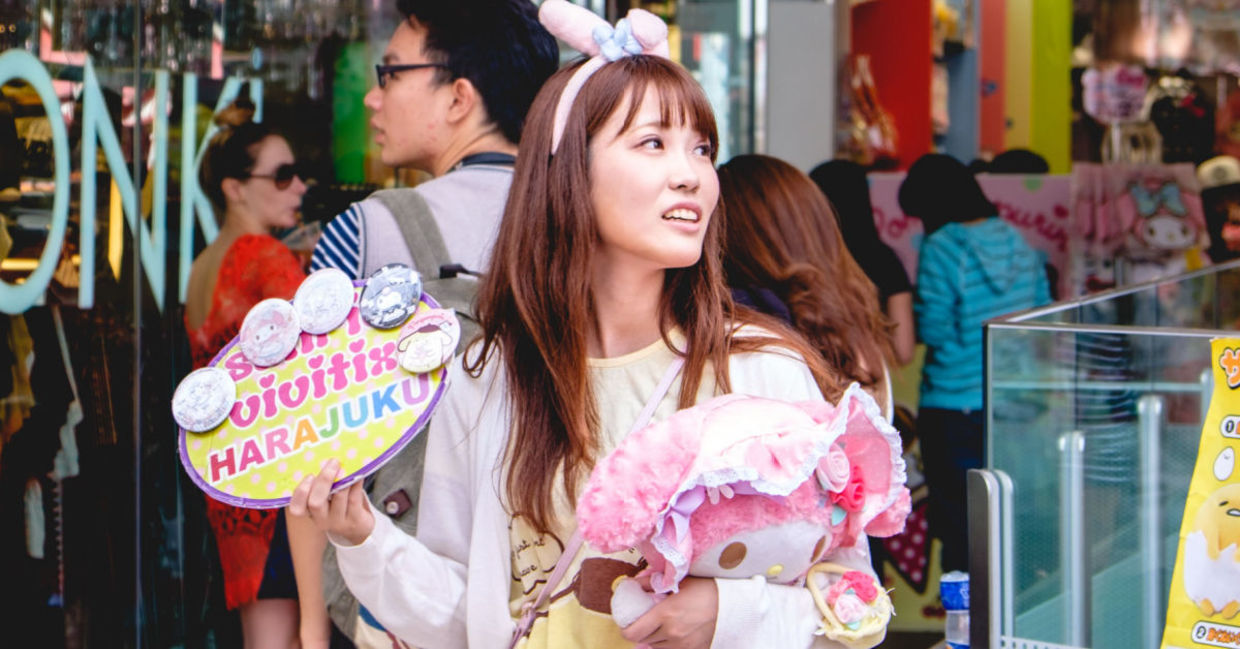
(Samuel Ponce / Shutterstock.com)
The Japanese concept of kawaii is frequently translated as cuteness, but it is so much more. Kawaii can actually describe a myriad of things that range from animals – real or anime – people, clothing, and decoration, according to a blog from Rakuten Travel Experiences. Think Hello Kitty and Pokémon.
But that still doesn’t explain why kawaii has been gaining in popularity for decades. It has actually become a Japanese cultural phenomenon.
Hiroshi Nittono, the director of the Cognitive Psychophysiology Laboratory at Osaka University has researched this concept of cuteness in a 2012 study and found that looking at kawaii actually makes people happier.
According to Nittono, kawaii is the feeling that you get in the presence of something that triggers an emotion like a cute baby animal, reported Wired. Viewing these types of images elicits an emotional response of caregiving and wanting to protect. That’s why in Japan, people tend to say that they feel kawaii. It is this emotional response to stressful times that has led to the immense popularity of all things kawaii
An evolving concept
While the cuteness concepts that people equate with kawaii only date back to the 1970s, its roots go back a lot further. The first use of the term dates back to the Heian Period (794-1185), that is known as the golden age of Japan, according to the travel blog. While the meaning of the word has changed through the ages, the idea of feeling emotion for adorable things as been around for a long time. Kawaii literally means able to be loved, and it is all positive.
In the 1970s Japanese girls wanting to break away from the rigidness of post war culture, developed their own cute childlike handwriting that featured curvy lines next to hearts, stars, and adorable cartoon faces, according to My Modern Met. While it was banned from schools, the style was picked up by advertisers and led to the first kawaii character, Hello Kitty.
View this post on Instagram
The Japanese stationary line Sanrio launched Hello Kitty in 1974. This cat with no mouth and a pink bow was designed by Yuko Yamaguchi and first imprinted on a coin purse. Countless products followed and Hello Kitty became popular around the world. There is even a hello Kitty themed bullet train.
Other pop-icons followed including Pokémon’s Pikachu, Melon Kuma, the lazy egg Gudetama and even emojis. All these characters are designed in a simple style with large heads, small bodies, wide eyes, and very little or no expression. What unites them all is cuteness.
Kawaii Food
Another area where kawaii has become a major trend is in food, adorable food, reports CNN Travel. In cafés across the country, you can find food, like rice or baked goods, that is carefully molded into the shape of cute animals in the distinctive kawaii style that incorporates the Japanese style of food aesthetics that dictate small potions with contrasting colors and shapes with a cute twist.
View this post on Instagram
Kawaii food is exemplified in the trendy concept of “charaben” or character bento box. These elaborate lunch boxes feature food – rice with carefully cut seaweed, vegetables, cheese, or lunch meat, that is sculpted to look like popular characters like Micky Mouse or Snoopy.
Many of these lunches take hours to prepare and Japanese mothers make them daily for their children. It is a way for moms to express their love as well as get kids to eat a healthy nutritious meal.
Kawaii food is very popular on social media with people loading pictures on Instagram and creating how to videos on YouTube. In Japanese kawaii culture, food really is love.
Even more cute
Fast forward to today when the concept of what makes something kawaii is not limited to cute cartoon characters. Artists are adapting several cute styles including creepy cute and ugly cute. One artist who embraced the style is Takashi Murakam, who is the founder of the Superflat art movement.
View this post on Instagram
Kawaii has branched out to fashion like Lolita Fashion which finds inspiration from Victorian times and creates cutsie outfits with ruffles, bows, and parasols.
Cosplay, or costume play is also a big part of kawaii culture now with people dressing up as anime or manga characters. Some people are dressing up as cute pop-icons. There are organized cosplay events and gatherings in Japan, Korea, the Philippines and fast spreading to other countries. In these hectic and stressful times, everyone needs some cute in their lives.
YOU MIGHT ALSO LIKE:
Gudetama Inspires A Different Kind of Cute
Why Amigurumi is Such a Sweet and Popular Craft
Kintsugi: How to Embrace Imperfection







